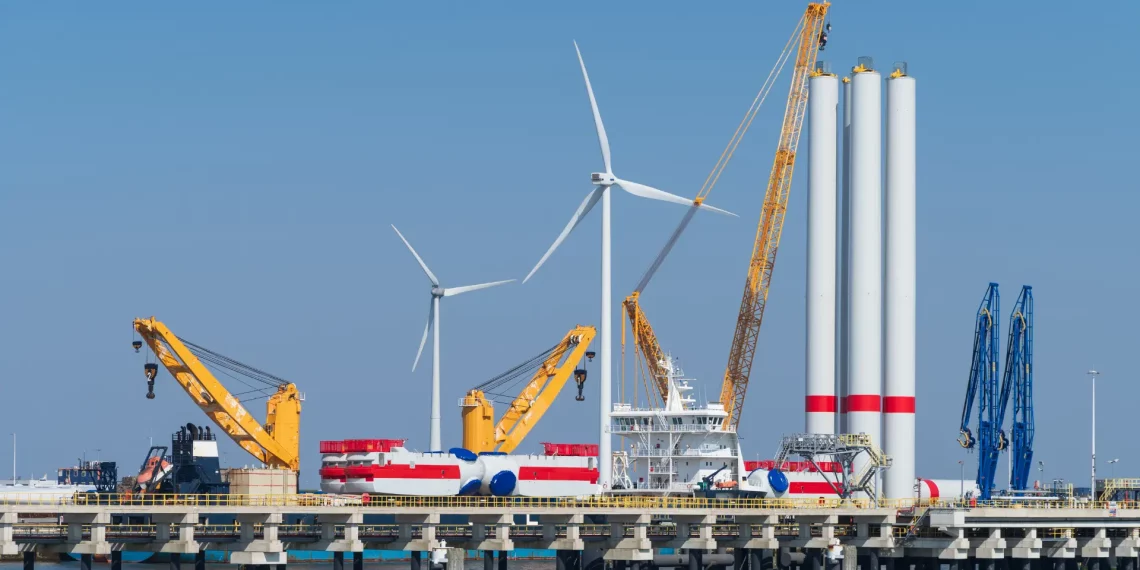The present scenario in the wind farm industry looks astray from the ambitions of the state heads.
European nations have been aggressively investing in wind farm projects for multiple reasons. The latest push is driven by Russia’s weaponization of energy supplies. The goal to become carbon neutral is also a significant factor. Recently, nine European nations have committed to increasing the capacity of North Sea wind farms by eightfold. Belgium’s energy minister called it Europe’s biggest green power plant.
The present scenario in the wind farm industry looks astray from the ambitions of the state heads. Rising inflation has shot up construction costs, and an increase in interest rates has made financing such capital-intensive projects even more costlier.
A Swedish energy company, Vattenfall, which has been conducting the groundwork for years for what is expected to be the world’s largest offshore wind farm in the North Sea of eastern England, is hinting that this project might never reach its completion. In July, it announced that it would stop the work on three phases of the wind farm complex, the Norfolk Offshore Wind Zone. This complex is anticipated to power approximately 4 million households in Britain.
Vattenfall complains that increasing machinery and construction materials costs have risen by almost 40% in the last few quarters. They highlighted that the estimated budget for the three phases has risen to £13 billion ($16.6 billion) from the previous £10 billion.
Developers from the United States have reached out for renegotiation of power supply contracts, with one of them abolishing their contract altogether. The world’s largest offshore wind developer, Orsted, has cautioned that without government aid, the Hornsea 3 could be at a major risk.
Siemens Energy, a turbine manufacturer, reported a net loss of 2.9 billion euros ($3.2 billion) for the first quarter of the current financial year. It said that the increased cost of production and emerging problems in its business operations had caused the drawdown.
Change in the licensing procedure
Morten Dyrholm, group senior vice president for corporate affairs at Vestas Wind Systems, a Danish turbine manufacturer, said that the sector requires significant transformation otherwise, they are wasting time operating in this industry. He also highlighted that the government regulatory bodies need to change their system of granting offshore wind licenses owing to the inflation challenges.
The licensing procedure for constructing wind farms is different in every other country. The most common approach is an auction of seabed leases, followed years later by contracts that fix the price paid by power companies to generate electricity.
Industry leaders suggest that the terms of such contracts need to be changed. Mostly, they are arranged to reduce power prices for the end consumers and increase revenue by lease sales, but certain additional factors should be taken into consideration for enhanced profitability.
They put forward an example as a model of the seabed rights awarded by Scotland last year that took into account other factors like the ability of the wind companies to develop suppliers and their previous experiences.
These can open pathways for huge business corporations like Amazon and Microsoft, which demand massive quantities of electricity to feed their data centres. These businesses would be more negotiation friendly in deciding the terms, unlike government authorities that don’t move an inch while crafting a deal.
Contract pricing problems
Offshore wind projects generally take over a decade to produce electricity from the planning stage. This means that the pricing agreement was calculated based on years-old factors. The inflation problems hit offshore wind farms that are near completion, and the energy-producing farms have negligible impacts.
In the past few years, huge amounts of investments flowed into this industry, mainly when interest rates were significantly low. Back then, inflation was not an issue, and the demand for wind farm equipment was having a winter season. But now, having undertaken big projects, developers find themselves stuck in collecting construction equipment.
They are worried due to the increased costs of all necessary requirements, from wind turbines to specialised construction ships, and also bank financing. As per some industry experts, prices of wind turbines alone have soared 30% in the last year.
Developers are petitioning to negotiate the terms with the government or change the terms of future auctions. They don’t want to shut down the projects completely. Instead, find a way to continue with revised financial figures. Some developers are threatening to cancel the current agreements to supply power to utilities and are demanding new contracts. They are balancing out to not miss the opportunity of future demand for clean energy.
Apart from the noise, dealings in offshore wind energy remain strong. Recently, BP and TotalEnergies grabbed a deal in an auction in Germany and have agreed to pay around $14 billion over a span of 30 years for offshore tracts in France.

















